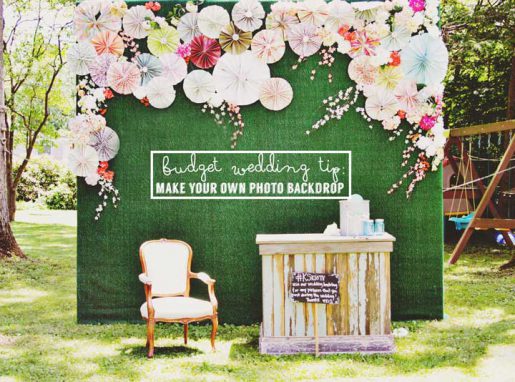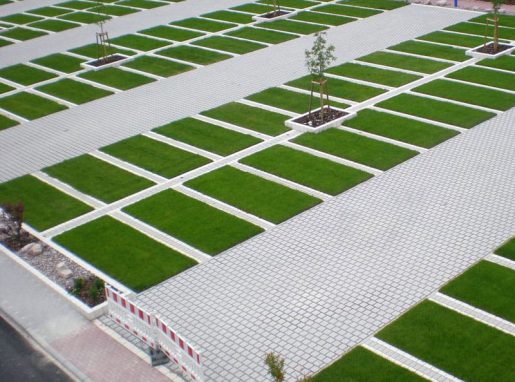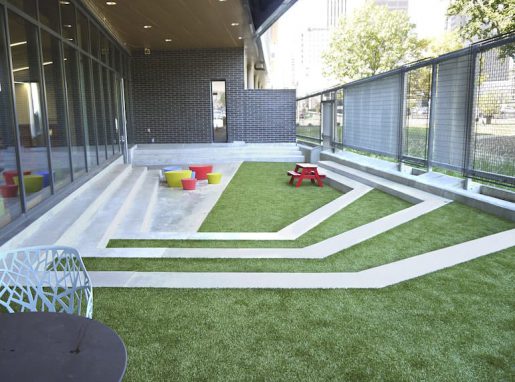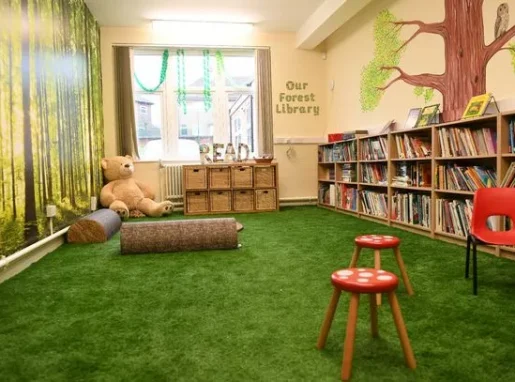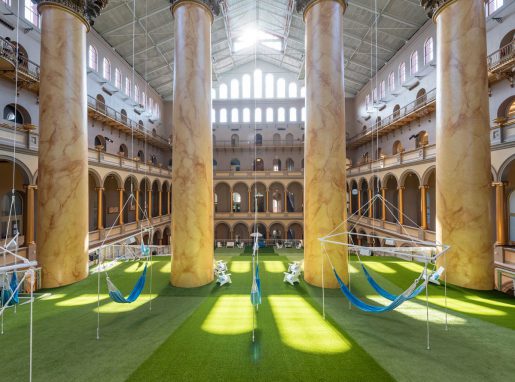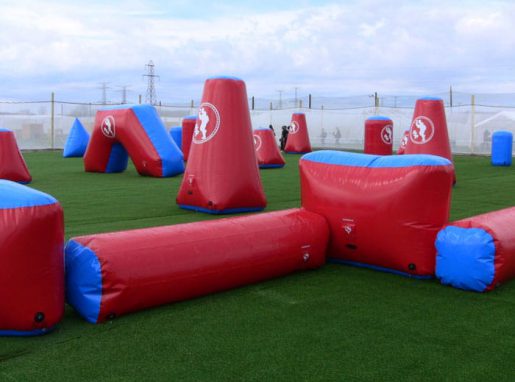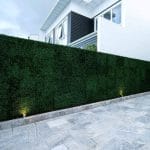Installing artificial grass between pavers on your patio is a great way to add a touch of greenery and style to your outdoor space with minimal maintenance. Here is a step-by-step guide on how to do it:
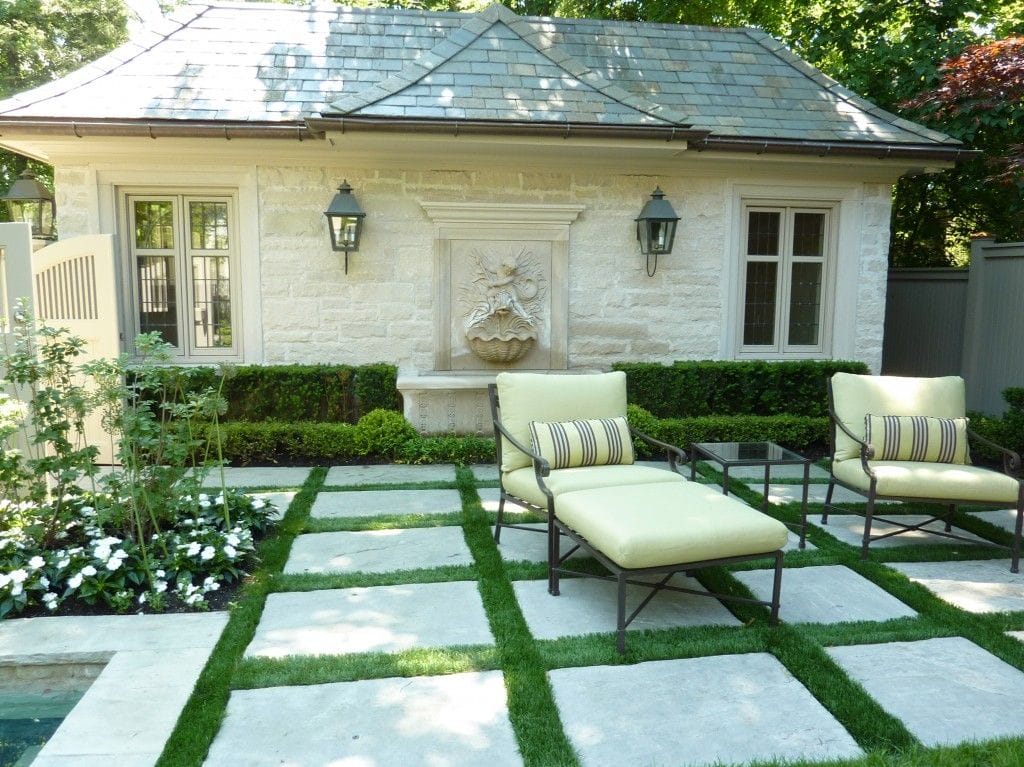
- Prepare the area. Remove any weeds or debris from the area between the pavers. You may also need to level the ground, especially if it is uneven.
- Install a weed barrier. This will help to prevent weeds from growing through the artificial grass.
Image: [Installing a weed barrier for artificial grass between pavers]
- Add a base layer. This is not necessary, but it can help to improve the drainage and durability of the artificial grass. A good base layer for artificial grass is crushed gravel or decomposed granite.
- Cut the artificial grass to size. Use a sharp utility knife to cut the artificial grass to fit the area between the pavers. Be sure to leave a small gap (about 1/4 inch) around the edges of the pavers to allow for drainage.
- Secure the artificial grass. You can secure the artificial grass to the ground using nails, staples, or adhesive. If you are using nails or staples, be sure to drive them in at an angle so that they are not visible from the top. If you are using adhesive, be sure to use a type that is specifically designed for outdoor use.

- Brush in infill. Infill is a material that is brushed into the artificial grass to help it stand up straight and prevent weeds from growing through. You can purchase infill at most home improvement stores.
- Water the artificial grass. This will help to settle the infill and give the artificial grass a more natural look.
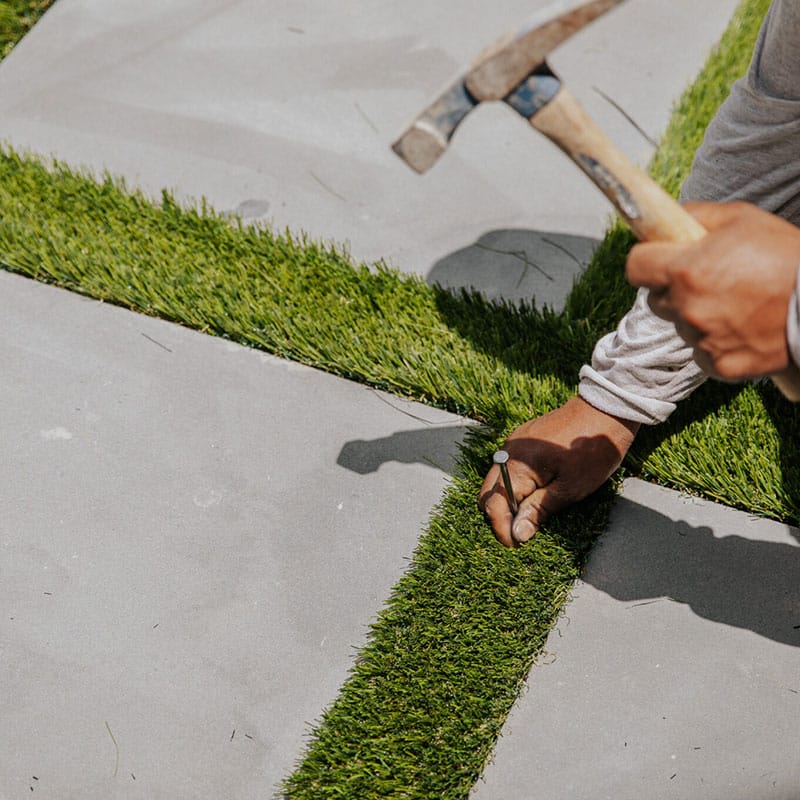
Once you have installed the artificial grass, you can enjoy your new low-maintenance patio for years to come!
Here are some additional tips for installing artificial grass between pavers:
- Choose an artificial grass that is designed for outdoor use and is UV resistant.
- Use a high-quality weed barrier to prevent weeds from growing through the artificial grass.
- If you are installing the artificial grass on a concrete patio, be sure to use a concrete adhesive.
- Be sure to leave a small gap around the edges of the pavers to allow for drainage.
- Brush in infill evenly to help the artificial grass stand up straight and prevent weeds from growing through.
- Water the artificial grass regularly to keep it looking neat and tidy.
By following these tips, you can create a beautiful and low-maintenance patio that will be the envy of your neighbors.
Design Concepts for Artificial Grass in Commercial Parking Lots
- Permeable and Sustainable Surfaces
- Designated Green Spaces
- Safety and Comfort
- Traffic Control and Wayfinding
- Branding and Aesthetic Enhancement
- Low Maintenance and Cost-Efficiency
Green Tranquility: Artificial Grass Elevates Dayton Metro Library’s Outdoor Oasis
- Nature Amidst Knowledge
- Year-Round Green
- Comfortable Retreat
- Community Engagement Spaces
- Sustainable Landscaping
- Ease of Maintenance
- Aesthetic Harmony
Forest-Inspired Library Transforms with Artificial Grass at St Maria Goretti Catholic Academy
- Nature's Touch
- Synthetic Serenity
- Whimsical Seating
- Minimal Maintenance, Lasting Appeal
- Reading Retreat
- Imaginations Awakened
Artificial Grass Design at the National Building Museum: A Green Oasis in the Heart of Architecture
- Aesthetic Harmony
- Sustainable Elegance
- Year-Round Appeal
- Public Recreation Spaces
- Versatile Applications
- Safety and Accessibility
- Educational Significance
Artificial Grass in Paintball: Enhancing the Paintball Experience
- Durable and Resilient
- Consistent Surface
- All-Weather Play
- Low Maintenance
- Player Safety


